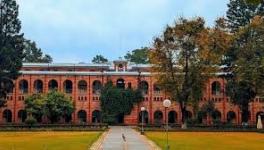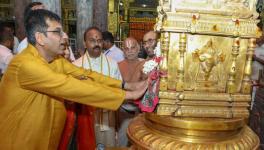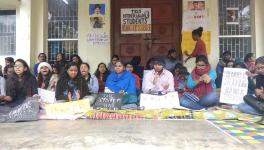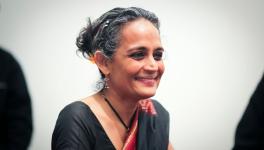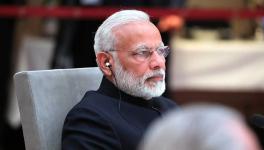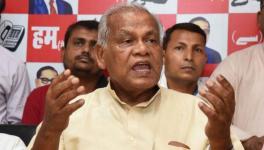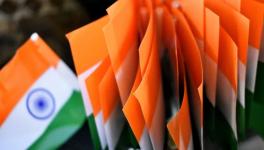Maharashtra Dalit Protests: It’s a Result of Joblessness and Atrocities
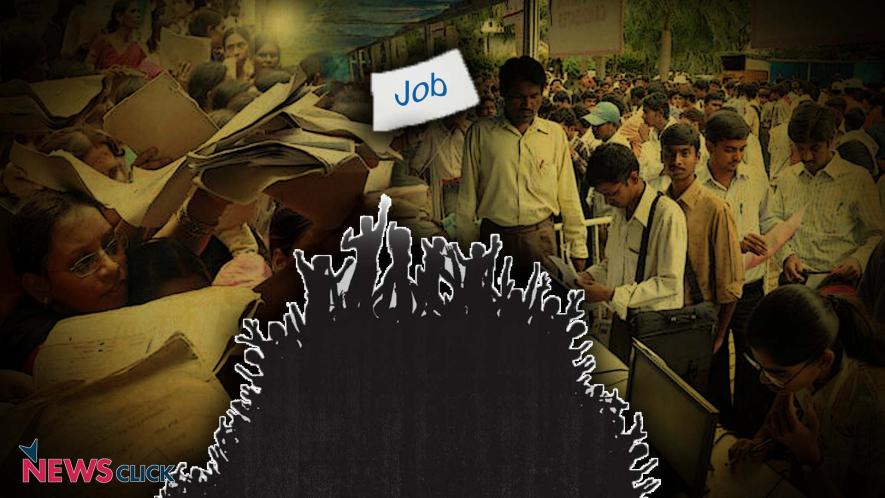
Newsclick Image by Sumit
As Maharashtra once again saw a wave of dalit protests on 3 December, the question foremost in people’s minds is this: what causes repeated tensions between dalits and other castes in the state and why does each incident snowball into a statewide outpouring of anger. Maharashtra is considered an ‘advanced’ state in terms of industrialization, agricultural output, business and financial sectors, with high educational spread, high urbanization and relatively better health indices. Yet, it seems to be struck by one caste atrocity after another, one caste based mobilization after another. What’s happening?
Consider the following facts:
-
In 2016, Marathas held 57 massive rallies in different parts of the state demanding reservation in govt. jobs and – scrapping of special laws meant to shield dalits from atrocities.
-
In the same year, here is the count of atrocities by higher castes on dalits in the state: 45 murders, 60 attempts to murder, 35 grievous hurt, 352 assaults on women, 40 kidnapping and abductions, 220 rapes, 235 rioting cases, 15 arson cases, making up a total of 1518 cases registered under IPC read with the special law to deal with dalit atrocities (Prevention of Atrocities Act, POA). Besides these cases, 218 cases were registered just under POA, with another 14 under Protection of Civil Rights Act, meant to prevent discrimination against dalits. So, in all just one year saw 1750 cases involving 1839 dalit victims. That’s almost five cases every day.
Clearly, dalits are under siege in Maharashtra. While cases registered and brought to public notice are only a fraction of the real scale of violence against dalits, there is no denying that the reported scale is shocking, especially for a so called advanced state. The protest by Marathas, a politically and economically dominant caste, though still ‘backward’ in the caste hierarchy, was bizarre because NCRB data shows that conviction rates in the cases registered under special laws for dalits are no more than 10%. The Maratha protests were actually an admission of culpability. It was no coincidence that all rallies were festooned with the saffron flag, identified with not just Shivaji but with contemporary Hindutva.
So, it is not surprising that there is pent up, simmering anger among Maharashtra’s dalits. It requires but a spark – like that provided by Bhima Koregaon incident on 1 January – to inflame statewide passions and bring people on the streets. But the story doesn’t end here.
Consider some more facts (drawn from the last Labour Bureau report):
-
In 2016, unemployment rate among dalit males in urban Maharashtra was twice that of upper castes. Taking all persons, in both rural and urban areas, unemployment rate among dalits was 13% higher than upper castes.
-
Over 40% of dalit workers did not get work all the year round. The share of such workers from Other Backward Castes (OBCs) was 32% and for upper castes 26%.
What this shows is that within the ongoing jobs crisis, dalits are suffering more than others. Not only are they less likely to get jobs, the work that they will get will not be sufficient with large periods of no employment in between jobs. This is disguised unemployment, the bane of Indian economy.
In Maharashtra, despite all the advances, dalits are facing a severe and continuing jobs crunch. This leaves them frustrated and angry – much more so than other castes because they have much less assets (like land). It is estimated that 55% of dalit households do not have any land.
With high urbanization and spread of social media, the visibility of inequality is much more. Mumbai’s sparking malls and luxury condominiums are brazenly visible to all the underprivileged. But socially and economically oppressed dalit communities feel the injustice much more.
So, haven’t reservation and other policies helped? It doesn’t appear to be so. A study carried out by TISS in 2015 revealed that just about 8% of dalit households surveyed had got admission in educational institutions through reservation. About 67% said that they missed out because of ‘administrative problems’. Only 18% had availed of post-matric scholarships provided by govt. and 22% had got any kind of freeships or scholarships.
Despite all this, gross enrollment ratio in higher education was 30% for dalits in Maharashtra – much higher than the national average of about 20%. Dalits have struggled against all odds to get educated, hoping to secure a slightly better life than till now. So, there is a large educated dalit youth army out there in Maharashtra. And it is ready to fight against atrocities, injustices and inequality.
Get the latest reports & analysis with people's perspective on Protests, movements & deep analytical videos, discussions of the current affairs in your Telegram app. Subscribe to NewsClick's Telegram channel & get Real-Time updates on stories, as they get published on our website.











